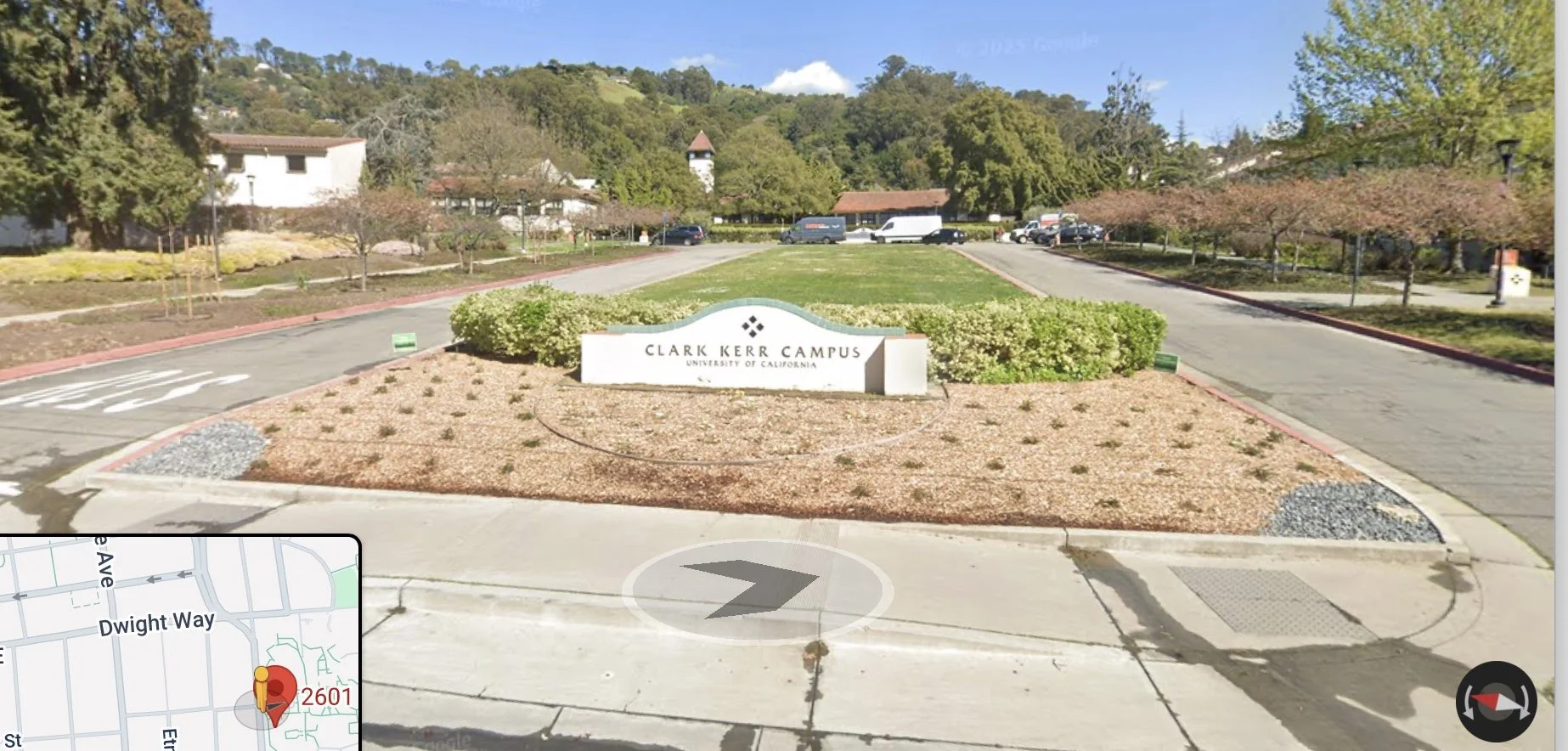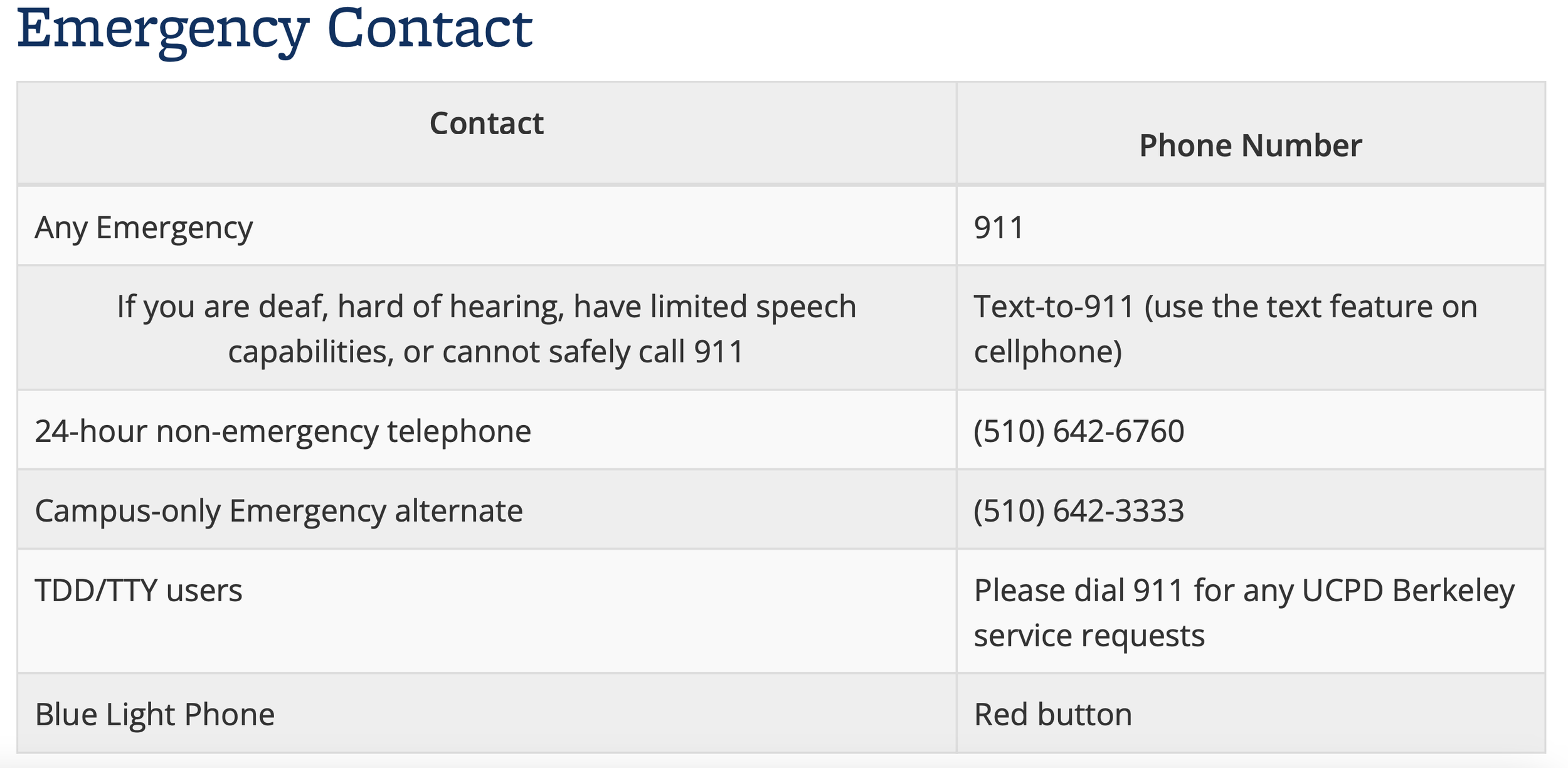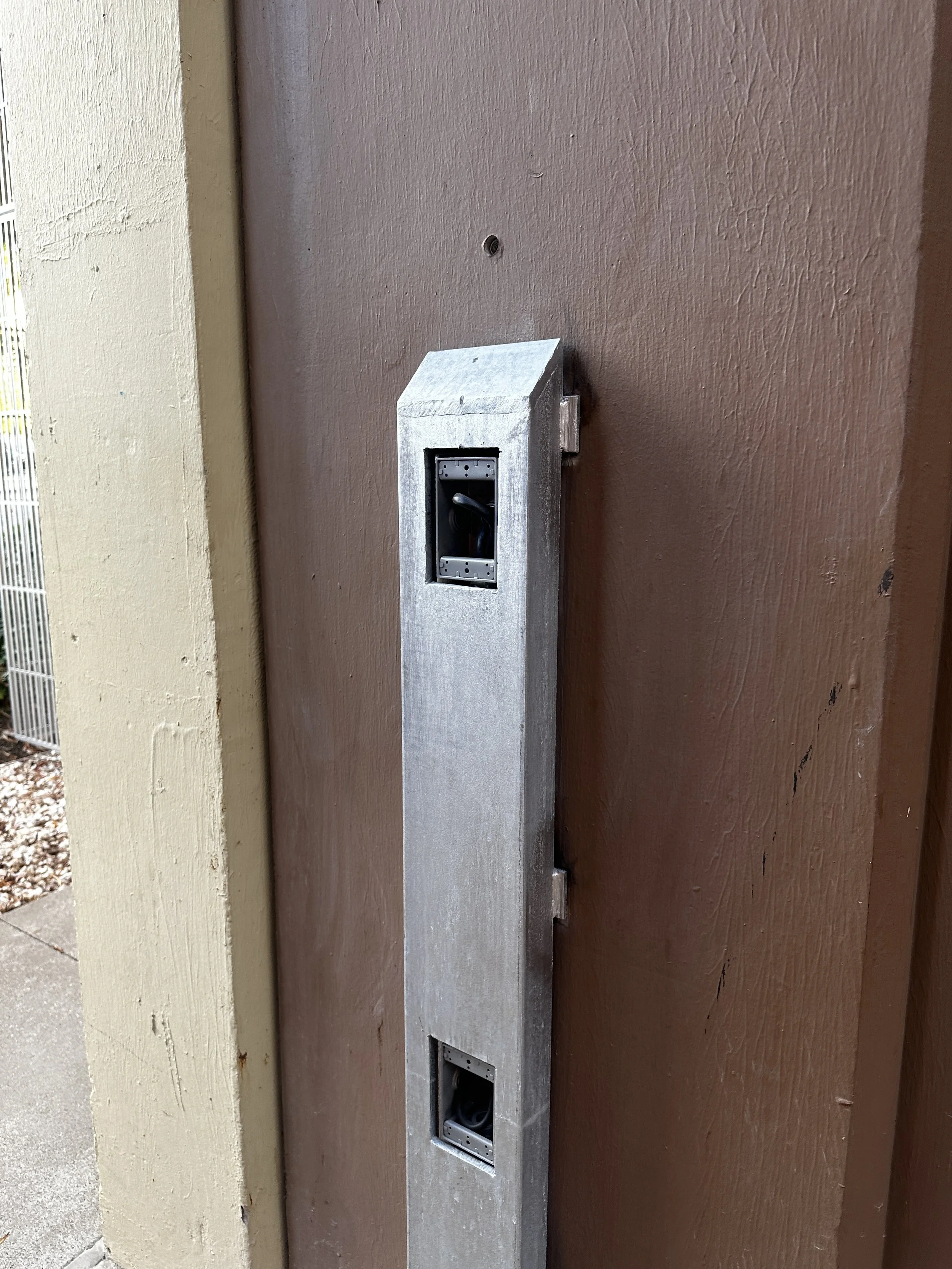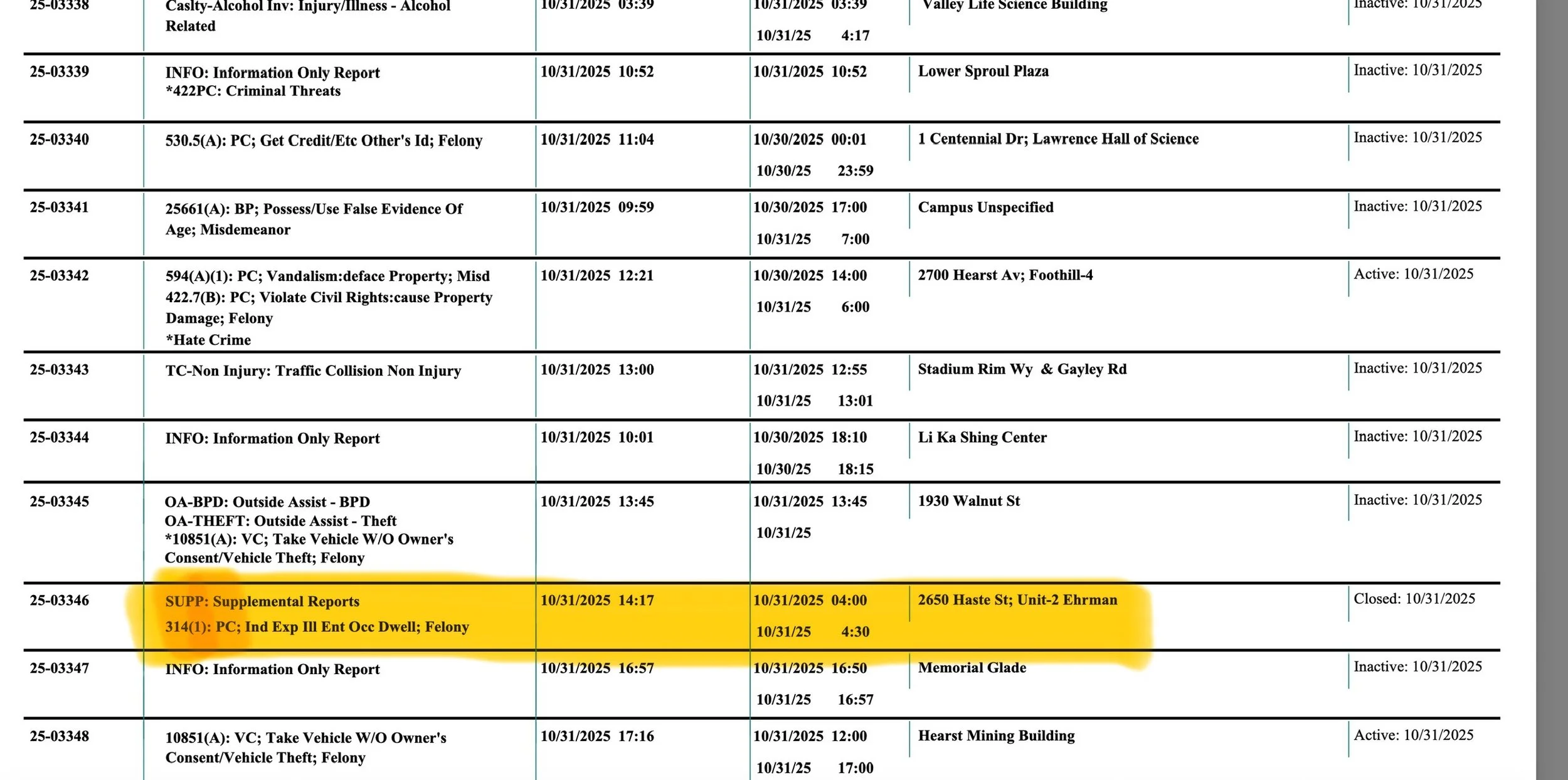Fall ‘25 updates on dorm security
Residence hall security has always been a top priority for SafeBears. For students to thrive at the best public university in the world they must feel safe and be safe in their campus homes.
Here’s an overview of our recent work on this topic.
Clark Kerr intruder
Two weeks ago an intruder accessed a residence hall shower at Clark Kerr Campus and then returned the next night demanding entry into the same building and peering into bedroom windows. Many parents are rightly concerned about not just the trespassing itself but about how it was handled by university staff.
SafeBears leadership has engaged with campus both by email and Zoom meeting about this incident specifically and dorm security generally. We’re still talking, but here’s where we are now.
(Update 11/10/25: A parent has posted in our Facebook group about another CKC trespassing incident that occurred last night in a different building but also involving an intruder in a residence hall shower. We’re working to learn more.)
✅ Administrators will meet internally about doing a comprehensive security assessment of Clark Kerr Campus.
SafeBears applauds this move, as CKC’s location and sprawling, decentralized layout present challenges for dorm security. For example, because CKC buildings don’t have central check-in desks, they do not have student monitors checking resident IDs at night as the Southside dorms do. Instead, student security guards called CSOs conduct nighttime patrols of the CKC grounds.
In recent years, campus has enhanced security at the dorms closer to main campus with measures including fencing and gates (under construction), improved staffing of lobby monitors, and dedicated nighttime patrols by SPOs, the full time, unarmed guards employed by the UC Berkeley Police Department (UCPD). Now is the time for campus to turn its attention to Clark Kerr.
To learn more about the dorm security currently in place, go to the UC Berkeley Residential Life webpage on resident safety.
✅ In response to SafeBears’ request, campus will consider restricting public access to Clark Kerr Campus at night.
Such a policy, together with posted “no trespassing” signs, would give UCPD officers a new tool for handling non-affiliates present on CKC after dark. UC Santa Barbara already has this policy for parts of its campus.
✅ SafeBears is still gathering information about campus protocols for students and residential staff when an intruder gains access to dorm facilities.
We are also seeking clarity about the details of the recent CKC incident — most significantly, how long the intruder was in the bathroom before a decision was made to call police. And also, who exactly called the police — residential staff, an individual student resident, or both?
For now, according to campus administration:
✅ Students are always empowered to call police themselves if they feel at risk from an intruder or any other situation;
✅ Residential staff’s protocol is one of de-escalation. That means staff will not automatically involve police unless safety or compliance requires it. (In this instance, campus says the Resident Director did instruct the Resident Assistants to call police, but that the RAs were able to locate and escort out the intruder without police assistance.)
Image: UC Berkeley Police Department (UCPD) website
Unit 2 and 3 gates
Some parents have noticed that the Unit 2 gates do not actually lock yet, and that the Unit 3 construction is progressing slowly.
Unit 2 gate with “tap to enter” pad not yet installed
The Project Manager gave us a construction update, but was unable to immediately provide new dates for expected completion. We’ll inform parents when we learn more.
✅ Unit 2 — Data and electric work is ongoing; much of the inside work has been done and when it’s finished the key card system outside will be installed
✅ Unit 3 — Posts are in the ground; fencing material is being fabricated
As for Unit 1, as we’ve shared before, campus agrees that Unit 1 should also have fencing and locked gates. But, the project has not yet been funded or scheduled.
Residents of Unit 2 and 3 will soon enjoy the added security of locked gates. Unfortunately, those gates will leave Unit 1 even more vulnerable.
Why the gates are needed
Units 1, 2 and 3 consist of high rise buildings arranged around a central courtyard with multiple entry points into the courtyard from the urban Southside neighborhood. Securing these residential compounds with fences and locked gates will provide an additional barrier to would-be intruders into the dorms. In addition, the gates, and attached “no trespassing” signs, will help prevent anti-social and criminal conduct by non-residents in the outdoor courtyards.
A recent incident of alleged felony indecent exposure at Unit 2 illustrates why these gates are needed. For indecent exposure to be charged as a felony, the alleged perpetrator must either (1) already have a conviction for indecent exposure or child molestation and/or (2) have committed the act after entering a dwelling without consent. While no single security measure is perfect, a layered approach will minimize trespassing and other criminal conduct that puts students at risk.
UCPD daily crime log, 10/31/25
Make your voice heard — email campus about dorm safety!
University administration is used to hearing from SafeBears. It’s really important for individual parents (and students, too, if they wish) to voice their concerns and advocate for commonsense safety measures. Any heartfelt email, however short, will be effective — no need to worry about writing style or covering every aspect of dorm security.
We’re currently recommending parents send emails to the following:
mackness@berkeley.edu (Jo Mackness, Associate Vice Chancellor, Residential & Student Service Programs - Division of Student Affairs)
sunnylee@berkeley.edu (Sunny Lee, Associate Vice Chancellor & Dean of Students - Division of Student Affairs)
alfred.day@berkeley.edu (Alfred Day, Assistant Vice Chancellor for Student Support & Belonging)
vcsa@berkeley.edu (Office of Vice Chancellor, Student Affairs, Stephen Sutton, who reports directly to the Chancellor)
vca@berkeley.edu (Office of Vice Chancellor, Administration, Marc Fisher, who reports directly to the Chancellor)





